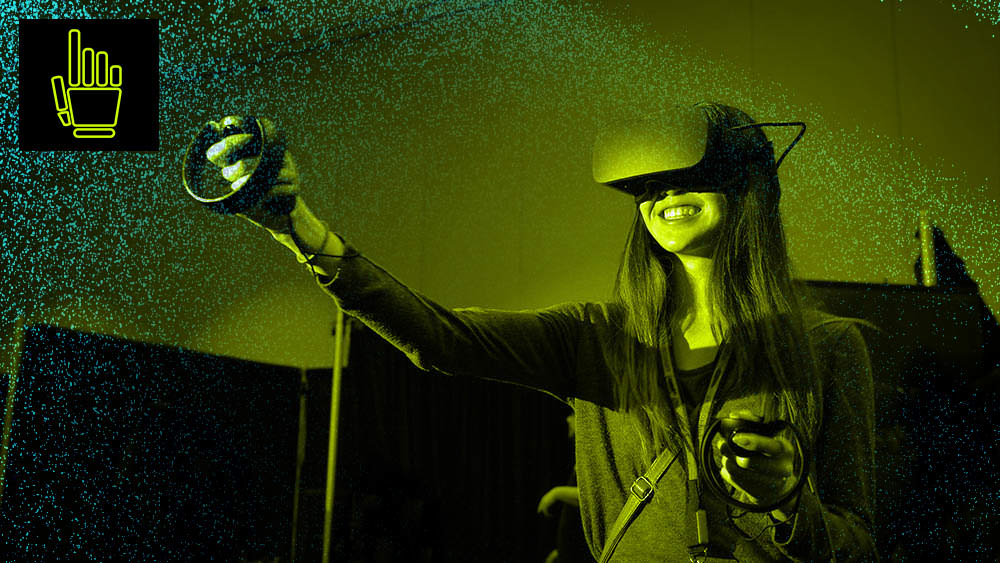
When Oculus VR first formed, there was no VR content as we know it in existence. But the company managed to launch with 30 titles in March 2016 and added another 30 titles when Touch launched in December to become its fastest growing hardware sector.
The Oculus Store now has over 500 titles, with more being added each month to the end of the year and possibly beyond. Additionally, the bar for quality has been significantly raised as developers better understand what works in VR and have longer development cycles. So, this is truly turning out to be the year of content the company promised.
“We were right. Price matters and quality of content matters—investing in the content and bringing the price down,” Jason Rubin, vice president of content at Oculus VR, told AListDaily. “This is exactly what is needed to bring VR to the masses.”
With the recent announcement of Marvel Powers United and the launch of Lone Echo, with its Lone Echo multiplayer component featured as part of the Intel VR esports series, Oculus has been taking on the market in full force over the past year, despite how many have described 2017 as being in the “trough of disillusionment” for the technology.
Rubin sat down to an exclusive interview with AListDaily, discussing the different approaches to bringing games to the market, and where it could grow in the future.
Free-To-Play VR
Oculus hosted a number of free-to-play weekends over the past summer, with the most notable being how Lone Echo (and by extension, Echo Arena) could be played for free for three months following its launch. But even though there are games such as Dragon Front, which are free to download and have in-app purchases available on the Oculus Store, Rubin said that free games make up the minority of content.
“There isn’t much free-to-play going on in the store—it’s either full-priced or someone is giving it away for free because they don’t know how to price it,” said Rubin. “When it comes to free-to-play, you have a top-of-funnel question—how many people could possibly come into this title? And of those people, how many are going to pay for something, how many ads are going to be shown and all these other things that go down in that business model. Right now, none of the VR systems are in a place where there is enough top-of-funnel usage to get to a successful business model at the bottom.”
Rubin then said that the best form of pricing is whatever works best for the consumer and developer. If it doesn’t work for one of them, then it’s not a good system. He said that both free-to-play and premium pricing are great, but it’s a matter of getting the developers and consumers to a consensus about what works.
“Different products have different needs and they work in different ways,” he said. “Free-to-play precludes some types of games because nobody has successfully had you come through a door then have you pay to walk through that door. They tend to pay for time shortcuts and things like that. If you want to make a linear game, you can’t go free-to-play—it just hasn’t worked so far. At the same time, there are things about free-to-play that create games that wouldn’t work in premium.”
The VR market might not yet be ready for a free-to-play system, but Rubin believes that it could change in the long run. He said that, like the PC market, VR will support whatever system developers and consumers agree on.
Subscription Model
HTC currently offers curated games as part of its Viveport subscription, where users can select five titles to play on the Vive headset every month. However, Rubin said subscriptions are a very tricky territory when it comes to video games.
“The question is—’is interactive content good for a subscription model?’” asked Rubin. “Let’s talk about the things that have worked well as a subscription model. Music and movies have worked well. Both of those products are fixed length, you tend to do a lot of them, and you tend not to do them over and over again.”
Rubin admitted to watching Star Wars in theaters eight times, but that is an extreme rarity for the movie business. He contends that people generally don’t watch movies repeatedly, and almost never back-to-back. Likewise, people may have a favorite song, but they’re usually done listening to it after about five times.
“For that reason, those work as subscriptions,” said Rubin. “Because everything is about the same size and is digestible in the same way by the consumer, it’s easy to say to Time Warner or Disney, ‘You both make great movies. We’re just going to see which movies people want to watch and pay you based on how many times they do.’ You’re all on the same ground, and if you make better movies, you’ll make more money. That’s basically how Netflix works.”
Rubin went on to say that things get considerably more complicated with video games because they’re a completely different beast. He cited two examples: Skyrim, a role-playing game that offers hundreds of hours of gameplay, and Uncharted, a deep experience that may be completed in about 10 or 20 hours. Both types of games would cost consumers $60 under a premium system and offer players very fulfilling experiences. But with a subscription, the publisher that has the long game will want an hourly model, while the shorter game will want to be paid equally.
“If you continue to think about how games are played and how they work, you end up in a situation where it’s so uneven that it’s very hard to get developers and publishers behind the idea of bundling because they all believe that their content is the most valuable,” said Rubin. “It’s the same for the movie business, but they’re all different enough that there is no way to compare them. So, what you tend to find with gaming subscriptions are old stuff and crappy stuff. I don’t know what the value is for crappy-stuff subscriptions. Maybe we’ll get there with old stuff, but we don’t have any old stuff. We’re only 19 months old. To discount something like Chronos makes no sense because it’s still a brand-new game to a lot of people. It’s not like a PS3 title on PS4 or a Call of Duty game from previous years. Chronos is still one of the most loved games in VR.”
Rubin said it’s been very hard for the industry to price interactive entertainment as a subscription for that reason.
“It may make sense to the consumer, but when you get to the creators, they can’t wrap their heads around a structure that works,” he said.
Managing A Divided Market?
In the months following the launch of the Oculus headset, the company was said to have bifurcated its own market until the Touch controllers released later that year. Some analysts said that this gave headsets like the HTC Vive a head start, given how its users could purchase both the headset and controllers in a single bundle when it launched in April 2016.
“Whether or not that was true at the time, you’re now looking at the Oculus Touch controllers being reviewed as the best on the market with the vast majority of Rift users owning Touch,” said Rubin. “If there was a moment in time where others had a better solution, it’s now irrelevant. We have the best solution by reviews, and we also have the vast majority of people that have both peripherals. So, I think we’re in a really good space today with Touch.”
However, it looks like history might repeat itself, with some in the media and analysts suggesting that the newly announced Oculus Go and the Santa Cruz development kit may end up splitting the market even further.
“It’s been very interesting to me to watch as Oculus, which was a new company and outsider criticized for bifurcating the market when launched without Touch, and again when we launched with Touch, and how that was going to destroy the market,” said Rubin. “Here we are, not having destroyed the market, and we have a solid base to build upon.”
Rubin also noted how HTC was currently developing Knuckles, an alternate hand controller to the Wand, but no one is asking, “What’s going to happen to Wand users?”
“All the nonsense that we went through is not being equally spread around,” he said. “I believe it was wrong to do it to us, and I certainly don’t suggest it should happen to anyone else, but it’s interesting to watch the different ways people are reacting. I think research is good, and this industry is going to move forward very quickly. As you can see with what happened with Touch, it’s fine.”
Working Without The Steam Advantage
Although there are numerous VR titles found on Steam, the world’s largest platform and store for PC games, its creator Valve has a very close relationship with HTC—it helped develop the Vive. Given how Oculus had to grow its own store from scratch using a number of games that it invested in developing, Rubin spoke about whether the company was at a disadvantage.
“What I would say is that Oculus faced a lot of challenges starting as a small Kickstarter that basically borrowed money from consumers to build the product,” said Rubin. “It didn’t have an operating system—it’s not built on Microsoft Windows—and it didn’t own a phone ecosystem the way Google does. And we didn’t have a store or developer platform. None of that existed when Oculus started, or even a year and a half later when I joined the company.
“Think about how far we’ve come and how much we’ve done in that amount of time. We now have a fully functioning store that is competitive in many ways, especially in VR, with other storefronts. We have a developer ecosystem of very happy developers and two functioning platforms—more than any other company—one on mobile and the other on PC. We have done an incredible amount. So, while these were challenges, I think we’ve overcome them amazingly. Over the next year or two, people will stop asking, ‘Was Oculus at a disadvantage,’ and start saying, ‘How did they catch up so fast and get so far beyond everyone so quickly?’ We’re fully dedicated to VR as a company.”

